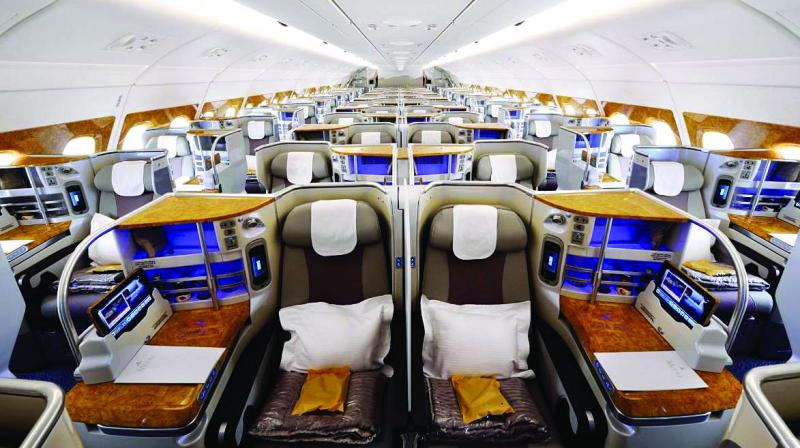Airbus to stop A380 superjumbo production

Paris: Europe’s Airbus is scrapping production of the A380 superjumbo, with lacklustre sales forcing it to abandon a dream of dominating the skies with a 21st century cruiseliner.
The world’s largest airliner, with two decks of spacious cabins and room for 544 people in standard layout, was designed to challenge Boeing’s legendary 747 but failed to take hold as airlines backed a new generation of smaller, more nimble jets.
Confirming a shake-up first reported by Reuters, Airbus said on Thursday the last A380 would be delivered in 2021.
The move comes after Emirates—the largest A380 customer—was forced to reduce its orders for the iconic superjumbo after an engine dispute and a broader fleet review, opting to order a total of 70 of the smaller A350 and A330neo instead.
Without the anticipated level of demand from the Gulf heavyweight, Airbus said its assembly lines would dry up.
“This was a joint decision. We cannot run after illusions and we have to take the only sensible decision and stop this programme,” Airbus Chief Executive Tom Enders said.
Airbus said it would enter talks with unions in coming weeks over the 3,000-3,500 jobs potentially affected. Enders later said the company could not guarantee all would keep their jobs.
Airbus will produce 17 more of the planes including 14 for Emirates and 3 for Japanese airline ANA.
As part of the restructuring, Emirates placed a new order for 40 A330-900neo jets and 30 A350-900 aircraft, partially restoring a purchase of A350s which it cancelled in 2014.
Enders said Airbus would continue to support the A380 as long as it remains in service.
From European dream to white elephant
Loved by passengers, feared by accountants, the world's largest airliner has run out of runway after 12 years in service due to weak sales.
The decision to halt production of the A380 superjumbo is the final act in one of Europe's greatest industrial adventures and reflects a dearth of orders by airline bosses unwilling to back Airbus's vision of huge jets to combat airport congestion.
Air traffic is growing at a near-record pace but this has mainly generated demand for twin-engined jets nimble enough to fly directly to where people want to travel, rather than bulky four-engined jets forcing passengers to change at hub airports.
And while loyal supporters like top customer Emirates say the popular 544-seat jet makes money when full, each unsold seat potentially burns a hole in airline finances because of the fuel needed to keep the huge double-decker structure aloft.
"It's an aircraft that frightens airline CFOs; the risk of failing to sell so many seats is just too high," said a senior aerospace industry source familiar with the programme.
Once hailed as the industrial counterpart to Europe's single currency, the demise of a globally recognised European symbol coincides with growing political strains between Britain, France, Germany and Spain where the plane is built.
That's in stark contrast to the display of European unity and optimism when the engineering behemoth was unveiled in front of European leaders under a spectacular light show in 2005.
British Prime Minister Tony Blair called the A380 a "symbol of economic strength" while Spanish premier Jose Luis Rodriguez Zapatero called the rollout "the realisation of a dream".
Passengers marvelled at the European giant with room for 70 cars on its wings, looking rather like the hump-backed Boeing 747 but with the top section stretching all the way to the back.
Airlines had initially rushed to place orders, expecting it to lower operating costs and boost profits as the industry crawled out of a slowdown in tourism since September 2001.
Airbus boasted it would sell 700-750 A380s, which nowadays cost $446 million at list prices and render the 747 obsolete. In fact, A380 orders barely crossed the 300 threshold and the 747 has outlived its rival, after reaching the age of 50 this week.
—Reuters

